Reducing poverty is an important SDG Goal and it entails not letting people become impoverished even more. This would require constant vigil over the causes of deprivation. Extension Advisory Services have the fundamental responsibility of monitoring the causes of deprivation and evolving more efficient ways of overcoming them. The Kerala experiment reiterates the fact that poverty as a social evil can be contained effectively through targeted public sector interventions. In this blog, Jiju P Alex deliberates on an innovative methodology devised by Kerala State to eradicate extreme poverty, supported by its wide network of grassroots level institutions and development agencies.
CONTEXT
Combating poverty has been, and continues to be, the most significant challenge globally as deprivation exists across the world, despite the remarkable progress made by humanity in different sectors. There are also instances of extreme poverty, which demand utmost attention and involvement of both governments and civil society. Since extreme poverty has multiple dimensions it needs to be addressed by multiple agencies. Also important is devising a comprehensive strategy to resolve the immediate causes of deprivation as well as manage probable factors that might lead to a return to poverty. Being the key concern of the sustainable development goals, governments across the globe have devised various measures to alleviate poverty.
In this blog, I present a brief account of an innovative methodology devised by the Indian state of Kerala to eradicate extreme poverty, supported by its wide network of grassroots level institutions and development agencies. In this case, the attempt is to identify the extremely poor households through a comprehensive survey and then devise micro level plans to address each of the causes of deprivation by harnessing the resources of local governments and the institutions under them. This experiment reveals several basic issues in harnessing grassroots level institutions and establishing sustainable linkages among them.
INCIDENCE OF EXTREME POVERTY IN KERALA
Among the many states of India, Kerala has the remarkable legacy of making prudent policy initiatives to deal with poverty. This has had tremendous results, with absolute poverty reduced to levels envied by other states. According to Kerala’s Poverty Index, only 11.3% of the population is poor, compared to India’s poverty level of 29.5% in 2011-12. There has been a constant drop in poverty levels over the last 40 years, with the incidence of poverty falling from 59.8% in 1973-74 to 25.4% in 1993-94, and then to 11.3% in 2011-12. NITI-Aayog reports that in terms of the multidimensional poverty index of 2021, Kerala is the least poor state in India – with only 0.7% of the population multidimensionally poor, considering various parameters.
As widely known, the strategy to reach this stage has been equitable income redistribution and empowerment through strong public institutions. This incredible achievement has been achieved through Kerala’s unique model of decentralised governance, which began a quarter-century ago and enabled improved access to resources and enormous opportunities for targeted action. However, the negative impact of the COVID-19 pandemic has raised the number of people living in extreme poverty to nearly 70 million worldwide, which obviously had an impact on Kerala as well. In India, there has been evidence of increased poverty since the epidemic, owing to loss of livelihoods and other debilitating consequences. Despite the well-established system of institutions and programmes at the grassroots level, as well as significant financial aid to combat poverty, there have always been isolated cases of abject poverty and hardship reported from different parts of the state. Given the long-standing commitment of the state government to eradicating poverty and the resulting achievements, any such incidence of deprivation has been highly alarming. It was under this circumstance that the state government decided to embark on a mission to eradicate extreme poverty from the state in the 14th Five Year Plan.
METHODOLOGY OF ESTIMATING EXTREME POVERTY
This massive attempt is unique in terms of the methodology it adopted: detailed household surveys to identify the poor in terms of well-defined parameters, assessment of the exact causes of poverty by individual household examination, and formulation of strategies to address each specific cause of poverty.
Absolute poverty was defined in terms of key parameters such as debilitating health conditions, disability, old age, lack of entitlement and material possessions like land and shelter, lack of livelihoods, etc. The type of impoverishment of marginalised sections of society (such as SC and ST), were assessed through broader criteria such as remoteness of dwelling places, low educational status, malnutrition, lack of amenities like drinking water, electricity, etc.
The method of identification of the extremely poor was a difficult task as targeting had to be precise, without the risk of missing out eligible households. The survey was done by members of Kudumbasree (a community organisation of neighbourhood groups of women in Kerala) and led by local self-governments.
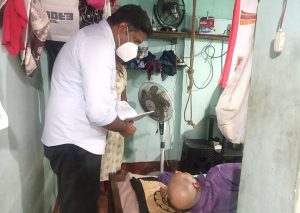 Household survey for the enumeration of extreme poor
Household survey for the enumeration of extreme poor
Distribution of households across causes of deprivation
The survey has identified 64006 extremely poor households across the state. Out of this, as much as 52,000 households are in rural areas; 3,021 belong to scheduled tribes and 12,763 belong to scheduled castes. Disaggregation of household data based on the criteria of defining poverty and the current status of households has given a clearer picture of the nature of poverty, its causes and how they are related to each other.
Distribution of extremely poor households across key factors contributing to deprivation showed that 35% of households did not have adequate income, 24% experienced health-related issues, 21% were deprived of food, and 15% did not have shelter. This distribution does not imply that a household is exclusively affected by one type of deprivation. Rather, most households are impoverished on multiple levels. A thorough examination of the houses would also assist us in identifying targeted treatments at the household and individual levels.
FORMULATION OF EXTREME POVERTY ERADICATION SUBPLANS AND MICRO PLANS
It is expected that by 2026 identified homes and individuals will be lifted out of extreme poverty. Each local authority would develop an extreme poverty eradication subplan for this purpose. Kudumbasree – the poverty eradication and women empowerment programme implemented by the Poverty Eradication Mission of the Government of Kerala (https://www.kudumbashree.org/#) – will assist in the implementation and monitoring of the subplan. Each subplan would be a collection of micro plans, which will be comprised of projects to address deprivation factors of each household.
The interventions at the household level have been categorised into: immediate care plans, intermediate plans, and long-term plans.
Immediate care plans: The services to be provided to the extremely poor households on an urgent basis are grouped under the immediate care plan. They also include services that can be provided readily by various development agencies. This may include entitlements such as Aadhaar card, ration card, health insurance, food, healthcare, etc. The list of households that require such services would be handed over to the concerned development agencies for immediate action.
Intermediate plans: Similarly, services or facilities that can be provided in a span of three months to two years have been included under the intermediate plan. Providing basic facilities, educational assistance, rehabilitating people living on the streets to care homes, continuous medical help, connecting the identified households and individuals to various welfare schemes, etc., are included under this category.
Long-term plans: Local governments are to produce long-term comprehensive plans in circumstances when neither immediate nor intermediate plans were possible, and interventions would take longer to implement.
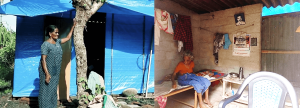 Extremely poor household that need immediate care
Extremely poor household that need immediate care
The projects will be scrutinised as per existing guidelines and approved by the District Planning Committee. The numerous interventions indicated in the micro plan will be aggregated at the local government level based on the development sector. The concerned working group would formulate development projects, which would be carried out by the related implementing officer. As an early entry-level action of the government’s historic intervention, a campaign was initiated to give documentation of various forms of entitlements to extremely poor households in a timely way. According to a recent estimate, as many as 79% of households have received Aadhaar cards, 74% have received ration cards, and 72% have received voter identity cards. As the first phase of formulation of development plans by local governments concluded in the year 2023-24, 1232 projects worth Rs. 90.03 crores have been formulated by local governments across the state.
ENDNOTE
This historic mission of eradicating extreme poverty has been made possible by the robust system of democratic decentralisation in Kerala, which enables the local bodies to intervene proactively at the grassroots level. Kerala can expect to reach an important milestone in its journey towards equitable and sustainable development if the micro-plans for reducing severe poverty are properly implemented. It would be known as the first state in India to totally fulfil two of the most critical sustainable development goals: ‘no poverty’ and ‘zero hunger’, through decades of tireless action.
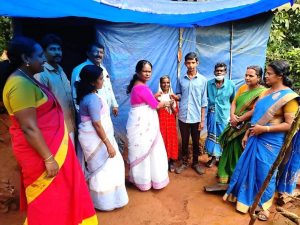 Distribution of entitlements (Aadhar Card, Ration Card etc) to extremely poor households to help them access free/subsidised provisions they are eligible for
Distribution of entitlements (Aadhar Card, Ration Card etc) to extremely poor households to help them access free/subsidised provisions they are eligible for
As stated earlier, this experiment would provide extension scientists with valuable cues on the strategies of development administration at the grassroots level, especially the ways in which rural institutions can be harnessed to develop synergies to resolve important developmental issues. This has also revealed the intricate nature of multi-dimensional poverty and the magnitude of efforts required to overcome abject deprivation. Forming mission groups to resolve serious development problems in a time-bound manner requires a high level of coordination among different agencies. The extreme poverty eradication mission is an ideal example of such an intervention. It also showcases an innovative way of accomplishing sustainable development goals appropriately and effectively.
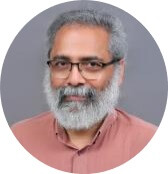 Dr. Jiju P Alex is Professor (Agricultural Extension), Kerala Agricultural University and Member, Kerala State Planning Board. He can be reached at (Email: jijupalex@gmail.com)
Dr. Jiju P Alex is Professor (Agricultural Extension), Kerala Agricultural University and Member, Kerala State Planning Board. He can be reached at (Email: jijupalex@gmail.com)

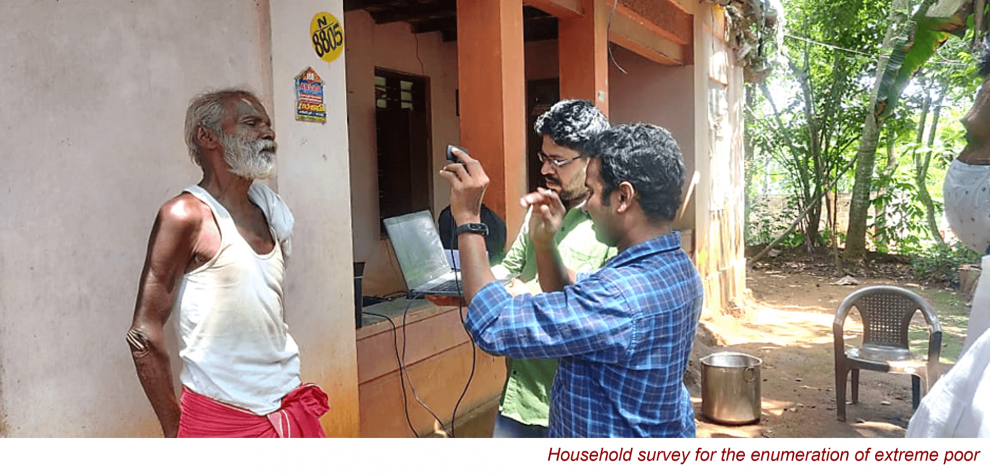

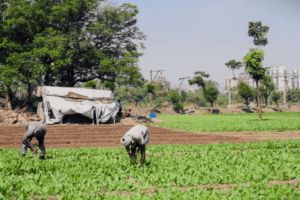

Glad that the Government of Kerala is addressing poverty with a systematic approach starting from identification of the poorest of the poor with appropriate criteria and devising methods to bring them out of poverty with the involvement of several institutions. The methodology adopted appears to be sound and this experiment I hope will succeed in helping the families in reeling under extreme poverty in Kerala.
Many poverty alleviating schemes (Arogya Sree for health, Antyodaya Anna yogana for food, and Avas Yojana for housing) implemented in states like Andhra Pradesh, Telangana, Pondicherry etc did not produce the expected results mainly because of lacunae in identification of beneficiaries. The criteria used for identification is mainly income and to satisfy large number of families (or more voters) either the income levels for BPL were raised to include more families entitled for subsidies. As a result the resources which need to be utilized for the extreme poor families are being shared by others thus diluting the purpose for which the schemes are conceived. This fact was highlighted by Ex MP Thiru Ramadass, Pondicherry
“As per information furnished by the Civil Supplies Department in 2019, 54% of households are below poverty line while the percentage of poverty stood at 1.72 according to NITI Aayog’s data released in 2021. The contrast in data reveals that a large number of households are pampered with red ration cards for vote bank politics, says Ramadass” (Government should identify real beneficiaries for poverty alleviation schemes in U.T., says former MP) -| The Hindu, January 26, 2023 Puducherry.
I wish and hope these issues are addressed by the state Government of Kerala in proper identification of the beneficiaries and adopting appropriate approaches to bring them out of poverty.
Thanks to Prof. Jiju P Alex for coming out with a blog, very much useful to the extension functionaries involved in poverty alleviation programmes.